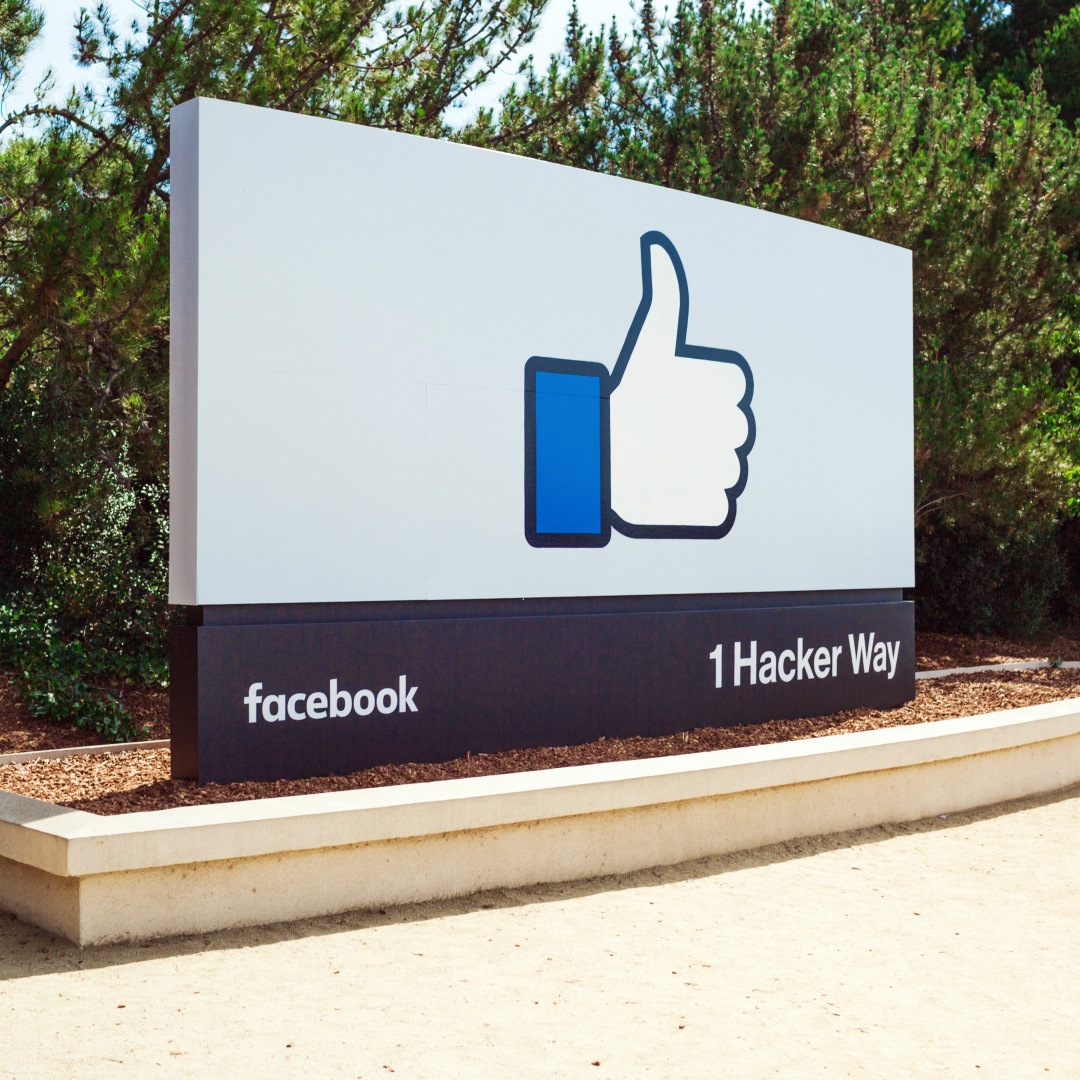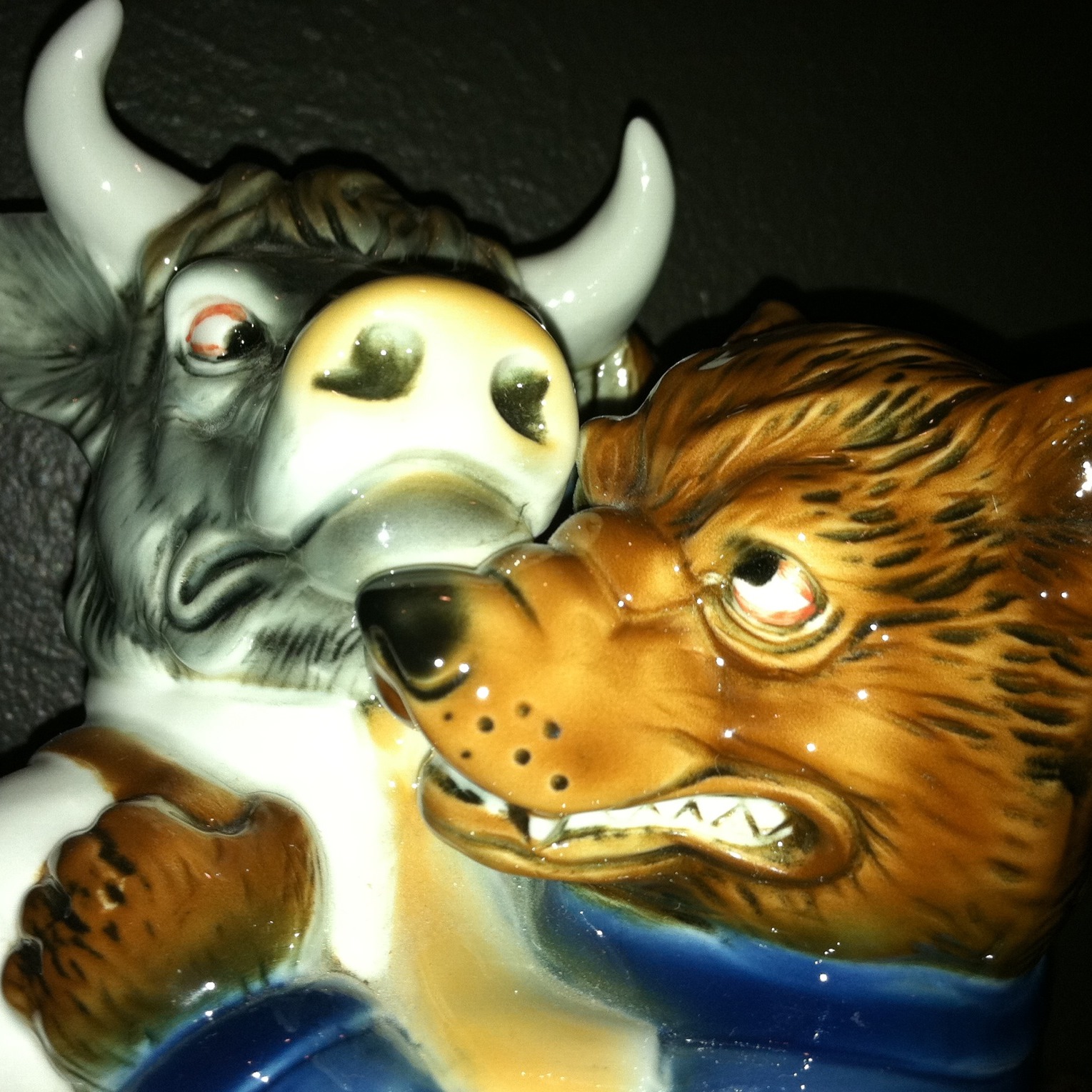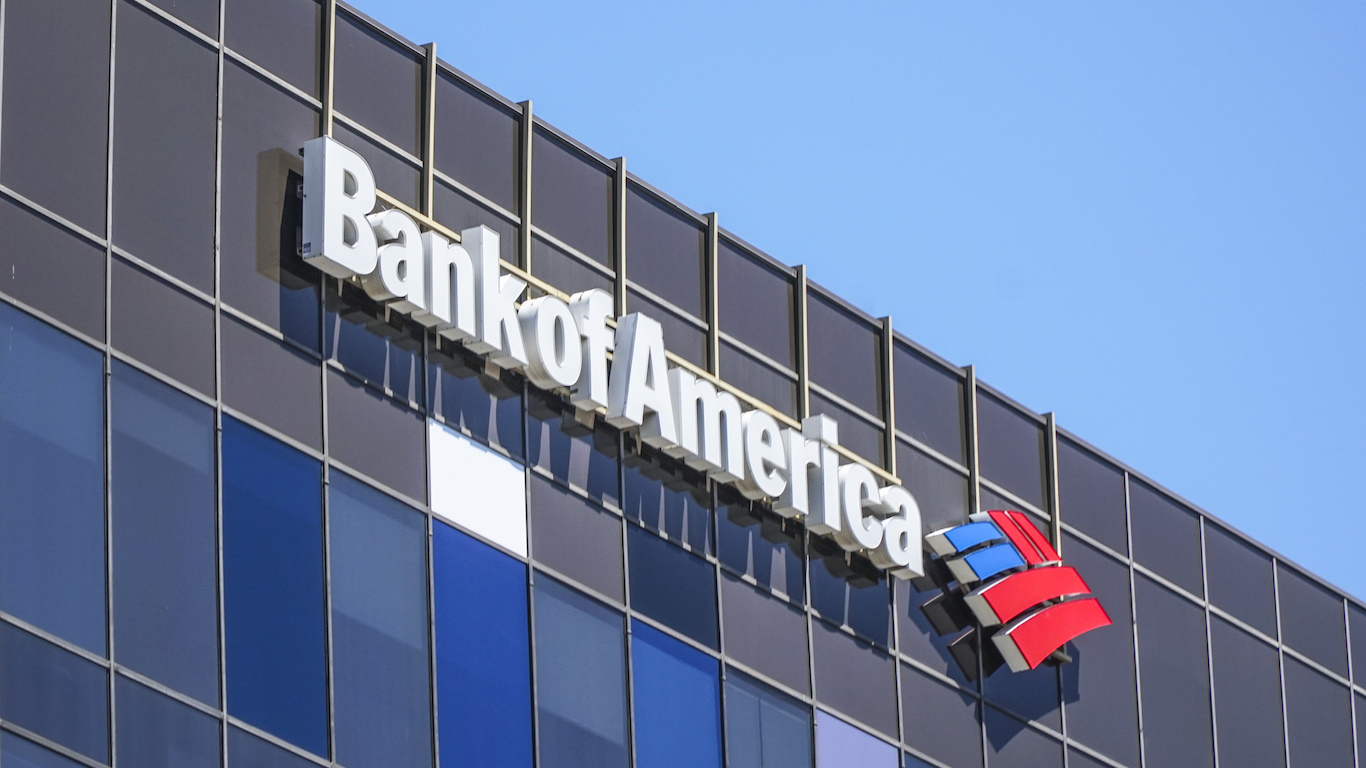
Wall Street and market pundits love to come up with acronyms for certain investing strategies and groups. The term that took off in 2015 was FANG, for Facebook, Amazon Netflix and Google. Other terms that have taken off in the past have been the Nifty Fifty, BRIC, MINT, 4 Horsemen and so on.
The FANG stocks did incredibly well in 2015. If you average out these four stocks, the year-to-date gains in the FANGs was 88%, versus right at flat for the Dow Jones Industrial Average and the S&P 500.
But what about 2016? It turns out that finding the great bulls in the stock market is becoming harder and harder. A recent view of 14 Wall Street strategists from Goldman Sachs, Merrill Lynch, JPMorgan, Credit Suisse, Wells Fargo and other top firms is calling for minimal gains in the S&P 500 in 2016. If the market remains choppy, the question that remains is whether the FANG stocks can come anywhere close to outperforming by this massive amount again.
24/7 Wall St. looked into the upside that got the FANG stocks to their height today. We also considered the downside potentials that could act as a drag ahead. These are not at all meant as predictions, and these are not forecasts that these risks will actually come true. Sometimes it is worth looking at both sides of the coin in major gainers to determine if upside remains.
Another consideration here is that analysts on average see upside in the FANG stocks. Many investors might also wonder why Apple Inc. (NASDAQ: AAPL) is not a FANG stock. Facebook Inc. (NASDAQ: FB) is the absolute leader in social media, and Mark Zuckerberg wants it to be much more in the future. Amazon.com Inc. (NASDAQ: AMZN) is the leader of online sales in just about every retail topic and has massive growth potential in business services and new target markets. Netflix Inc. (NASDAQ: NFLX) is by far the leader of online video subscriptions, and its international efforts could lead to growth for a whole generation shift for years and years. Google, now Alphabet Inc. (NASDAQ: GOOGL), wins in its core markets for online search and mobile operating systems, and its growth into tangent markets may seem limitless.
It is hard to not notice that the real FANG stocks have no dividends. Included in each review is the “what’s working now” and the potential risks, as well as stock performance and valuation metrics, and additional color.
Facebook undoubtedly has recovered massively from its post-IPO woes. The social media giant has performed well on mobile and desktop, has become an ad platform, wants to be a news platform and wants to be a tech center for virtual reality. Its performance has so far been about 37% in 2015, making it the weakest performer of the FANG stocks. Even the telegraphed donation and exit of the massive Zuckerberg stock sale plan for the years ahead did not crush Facebook’s stock.
Facebook does come with some risks. Having a $300 billion market value assumes that the public’s infatuation with wasting time sending hamburger and kid pictures does not fade. Another issue is that everyone who may have wanted to join Facebook’s ecosystem in the Western world has already done so. Another risk is that a move toward “dislikes” could come with a backlash on usage, and it then there is a risk that another virus or worm runs through Facebook like it did in the past. It could generate even more Facebook bans at work by employers.
Facebook’s shares were recently trading at $106.63, with a consensus analyst price target of $124.11 and a 52-week trading range of $72.00 to $110.65. The company has a market cap of $301 billion. Looking ahead to 2016 earnings, the company has a multiple of 37.3 compared to the current price.
Amazon
Amazon has been an amazing growth story, despite being over 20 years old and despite already selling everything that consumers want. The other growth has come from its Amazon Web Services for businesses, and Jeff Bezos has very few business sectors that he could not disrupt. Amazon’s growth literally has baffled skeptics, and shorting the stock just because of nose-bleed valuations has come with drastic pain as the stock’s gain in 2015 was last seen at 117%. Amazon Prime members love everything that Bezos does.
There are some risks ahead for Amazon. The big question is whether all of this disruption can come with high enough margins in the future versus its valuation. Another risk is expansion of tax jurisdiction efforts across the nation, and what if the trend of buildings no longer allowing deliveries all day or not protecting deliveries continues? Another risk comes from the effort around drones and alternative/expanded deliveries; it could cost a large fortune, and future regulatory issues around that could cost Amazon big time if it were ever forced to do a 180 on that plan. What if cloud and business services competition becomes a race to zero profits?
Amazon’s shares were recently trading at $675.65, within a 52-week trading range of $285.25 to $684.82. The consensus analyst price target is $738.85. The market cap is $316 billion. Looking ahead to 2016 earnings, the company has a multiple of 120 compared to the current price.
Netflix
Another stock of amazement in 2015, Netflix is the de facto winner of cord-cutting efforts. What started as a DVD rental delivery service has become one of the biggest users of bandwidth of all companies out there. It now leads in movie and video distribution and is adding more and more international countries to keep growing for years and years. Netflix is even winning Emmy awards for its own self-produced shows.
Still, does 151% year-to-date performance seem realistic two years in a row? The biggest concern for Netflix investors is its rising costs that may prevent its earnings growth from ever catching up to revenue growth. Most people in the Unites States who wanted to join Netflix likely already have done so, or so the skeptics might assume.
Netflix shares were recently trading at $124.34. The consensus price target is $123.03, and the 52-week range is $45.26 to $133.27. The market cap is $53 billion and a forward price-to-earnings (P/E) north of 400, relative to 2016 earnings.
Alphabet is still Google, just with a new name. The king of online search has become the number one mobile platform globally with Android. Google wins on advertising and it wins in many efforts like YouTube. Google now has a dominant position in global email accounts and wants to win more and more in business services. Share performance of about 45% year to date is more than impressive when you consider that its market cap is now a half-trillion dollars. Bringing in new solid management roles has also been considered a plus.
So, what could go wrong in 2016? Alphabet/Google has regulatory risks in the United States and in Europe. The company’s name change and restructuring effort, along with multiple share classes, has investors in a position that they may wonder if the company is operating in the best interest of Larry and Sergei or of the shareholders.
Alphabet shares were recently trading at $773.57, with a consensus price target of $848.07. The 52-week trading range is $490.91 to $793.05. The company has a market cap of $532 billion. The company has what seems like a very reasonable earnings multiple of 22.7.
Apple
We have considered Apple here as well, despite it not being a true FANG stock. After all, Tim Cook has led Apple to become the world’s most profitable company. Apple also has the world’s largest corporate cash position. Still, Apple’s shares were last seen up only about 2% so far in 2015. Apple is now a Dow Jones Industrial Average component, and unlike the FANG stocks it pays a good dividend. The success of the Mac, iPad, iTunes and iPhone has turned Apple into a major disruptive force.
So what risks does Apple have? For starters, many investors worry that a $600 billion or so market cap is just extremely difficult to grow. Another concern is that Apple’s growth has been around the iPhone refresh cycles. The iPad has not continued growing, and the Apple Watch has been covered by the media more than it has been adopted by the public. The move into a television set did not come, and the expected move in the future into the auto market has been deemed as a serious risk (even if it has massive upside). Still, Goldman Sachs has added Apple to its Conviction Buy List.
Apple shares were last seen trading at $110.25, within a 52-week trading range of $92.00 to $134.54. The consensus price target is $149.05. Apple yields almost 2% on the dividend and comes with a $613 billion market cap. What is so puzzling to many investors is that Apple is valued at only about 11 times forward earnings.
Again, this is heads-and-tails review of the FANG stocks and of the mighty Apple for what is going right now and for what could actually go wrong in 2016 or shortly thereafter.
The Average American Has No Idea How Much Money You Can Make Today (Sponsor)
The last few years made people forget how much banks and CD’s can pay. Meanwhile, interest rates have spiked and many can afford to pay you much more, but most are keeping yields low and hoping you won’t notice.
But there is good news. To win qualified customers, some accounts are paying almost 10x the national average! That’s an incredible way to keep your money safe and earn more at the same time. Our top pick for high yield savings accounts includes other benefits as well. You can earn up to 3.80% with a Checking & Savings Account today Sign up and get up to $300 with direct deposit. No account fees. FDIC Insured.
Click here to see how much more you could be earning on your savings today. It takes just a few minutes to open an account to make your money work for you.
Our top pick for high yield savings accounts includes other benefits as well. You can earn up to 4.00% with a Checking & Savings Account from Sofi. Sign up and get up to $300 with direct deposit. No account fees. FDIC Insured.
Thank you for reading! Have some feedback for us?
Contact the 24/7 Wall St. editorial team.

 24/7 Wall St.
24/7 Wall St. 24/7 Wall St.
24/7 Wall St.



